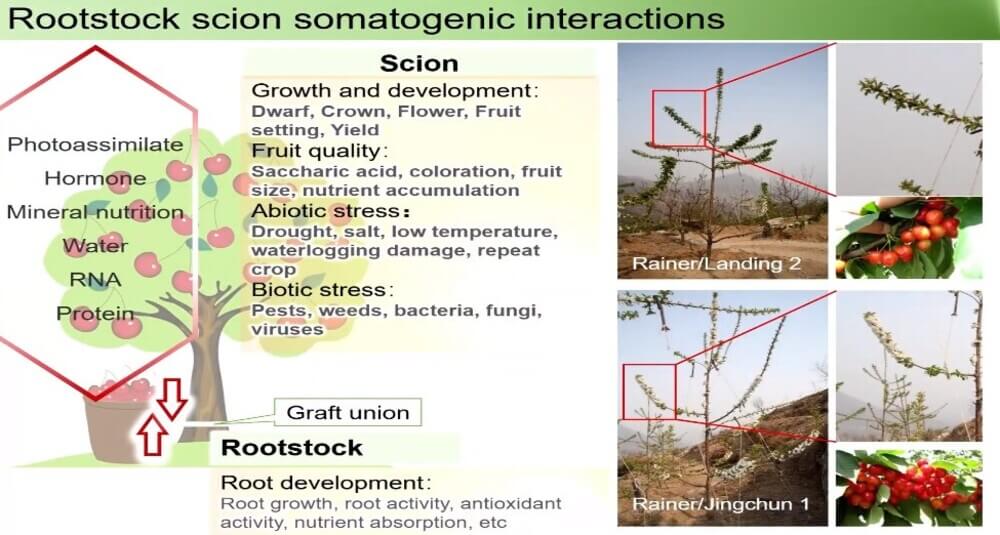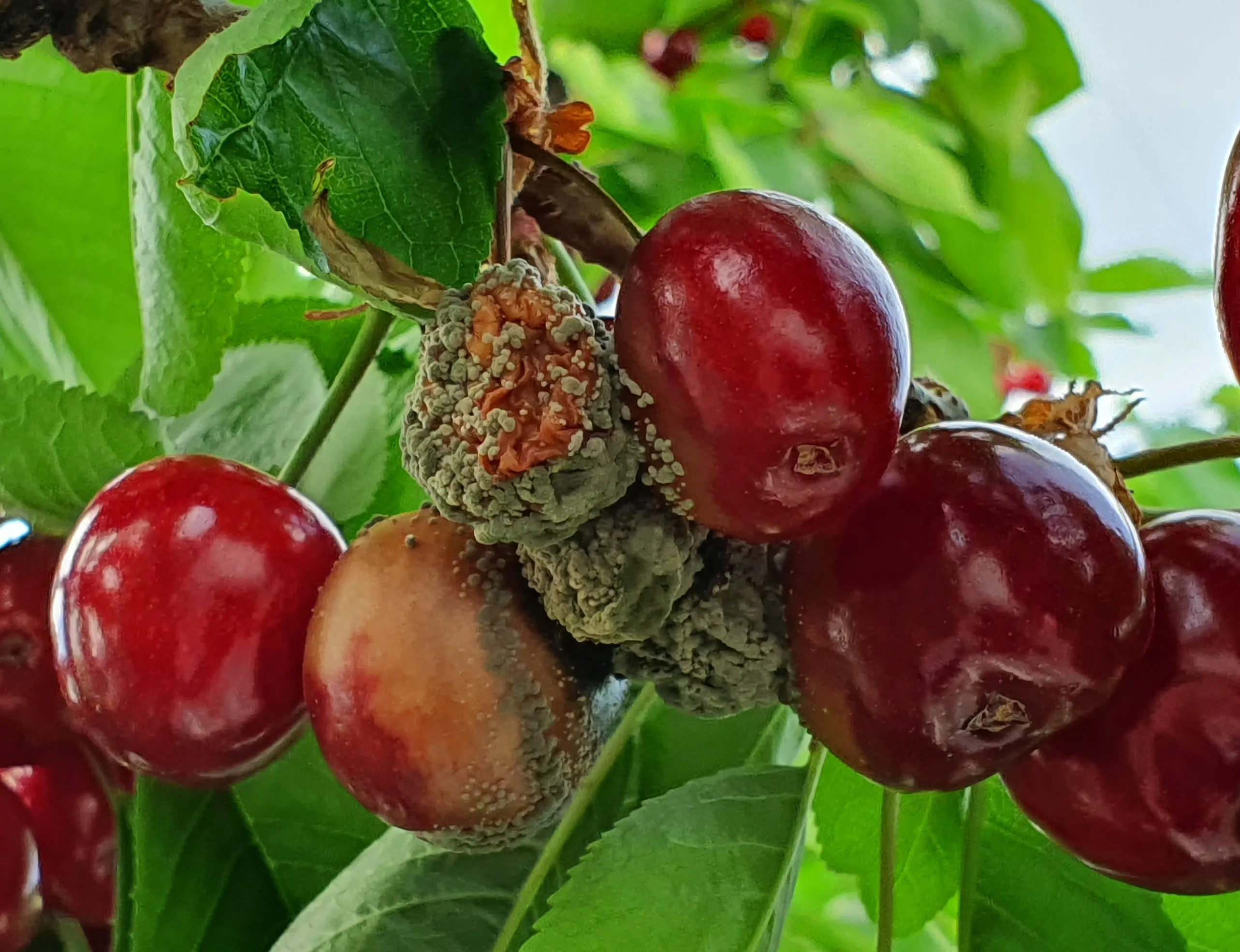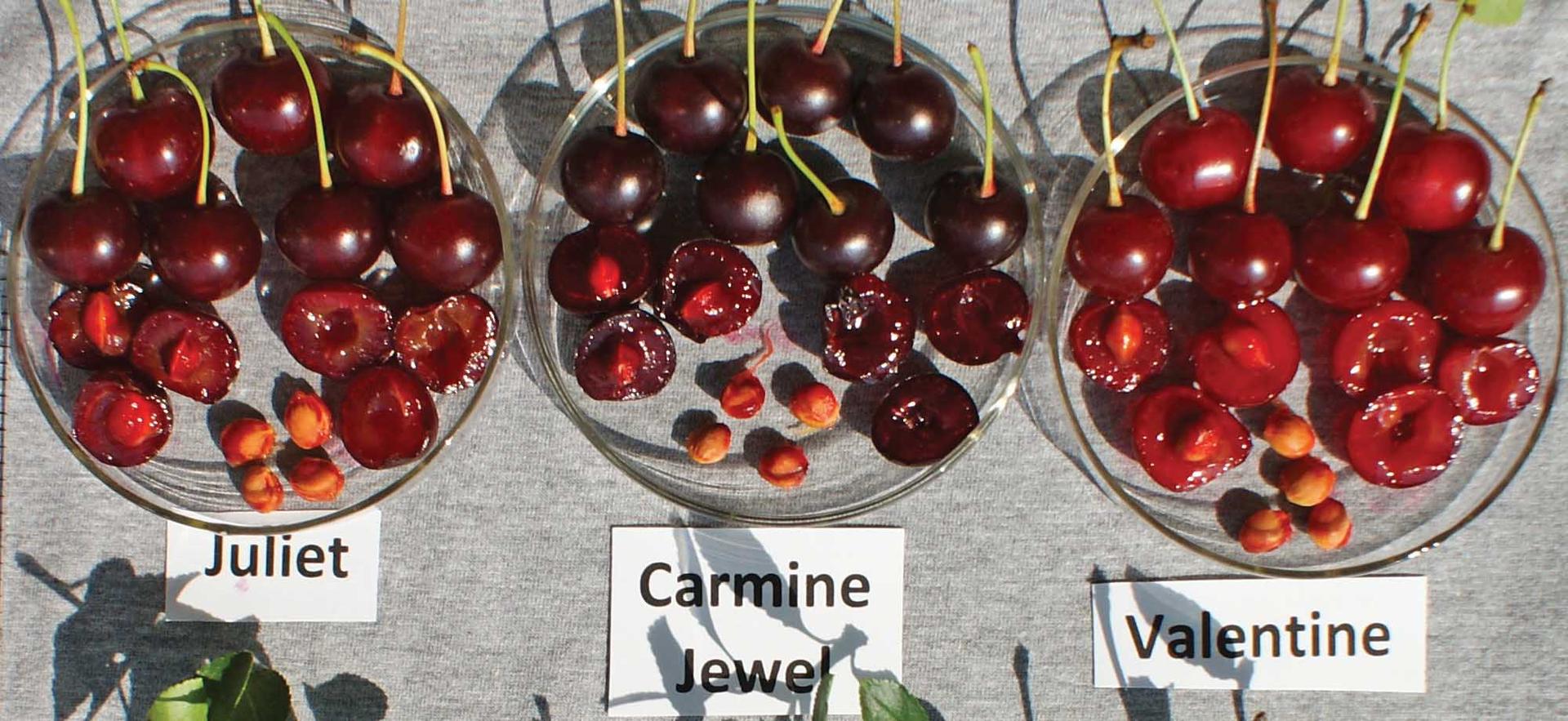Grafting is a commonly used practice in horticulture, mainly employed to manage plant growth, increase fruit yield and quality, and improve plant resistance to biotic and abiotic challenges. Indeed, the use of the Gisela 6 rootstock, which is recognised for its greater dwarfing characteristics than commonly used rootstocks in China, facilitates the achievement of higher crop yields.
This can be attributed to the greater abundance of flower buds, which consequently results in a higher fruit load. Researchers at the Beijing Academy of Agriculture and Forestry Sciences (China) analysed gene expression as a function of the rootstock adopted.
 Xuwei Duan
Xuwei Duan
For this study, the Tieton/Landing 2 and Tieton/Gisela 6 combinations were used by analysing 4-year-old plants. Thanks to this study, the PaMYBF gene was identified and at the same time it was noted that the expression of PaMYBF was significantly higher in the phloem tissue of the scion when grafted onto the Gisela 6 rootstock.
Preliminary results confirmed the correlation between the expression of this particular gene and the flowering process. Transcriptome analysis revealed considerable variations in the expression patterns of hormone-associated genes in the various rootstock and scion combinations.
In this study, it was also found that the expression of the PaMYBF gene can be increased by the exogenous application of phytohormones such as jasmonates. The repercussions of this increased gene expression are expected to have a favourable effect on the number of flowering buds, but targeted studies need to be continued to better understand this phenomenon.

Source: Xuwei Duan, Rootstock induced PaMYBF participating floral bud formation in sweet cherry, IX International Cherry Simposium, https://2021.cherries.org.cn/replayEn.html
Images: IX International Cherry Simposium
Melissa Venturi
University of Bologna (IT)
Cherry Times - All rights reserved












